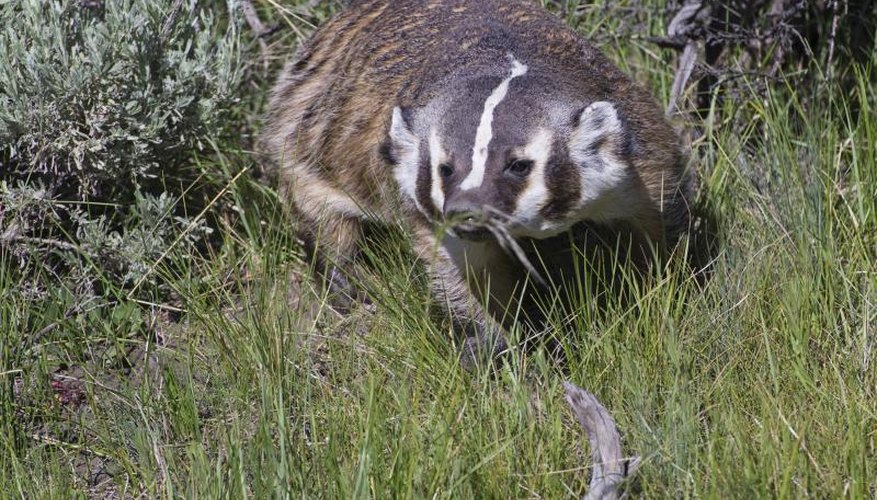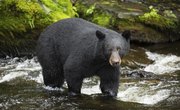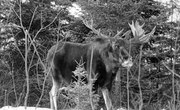
Not only are badgers tough and tenacious in nature, their pelts are also durable. Badger pelts are often used to make coats while just the hair is used for paint and shaving brushes. When it comes to harvesting a pelt, there is more than one way to skin a badger. Badgers may be skinned "cased" or "open," consult with your buyer prior to skinning to ensure you deliver the appropriate type of pelt.
Items you will need
Sharp skinning knife
Plastic or latex gloves
Game gambrel (optional)
Hatchet
General Preparation
Step 1
Don plastic or latex gloves before handling the animal to protect yourself from any parasites that may be residing in the badger's fur. Place adhesive bandages over any open wounds to avoid infection or contamination from the animal.
Step 2
Remove any burrs or dirt from the pelt prior to beginning the skinning process. Use a comb or brush to carefully work through the fur.
Step 3
Hang the badger from a gambrel or position the body on an elevated surface such as a clean work bench so that you can comfortably skin the carcass.
Case Skinning
Step 1
Make a cut from the top of the foot pad along the inside of one back leg to the top of the foot pad on the other back leg. Cut along the underside of the tail and peel the pelt away from the tail bone.
Step 2
Starting at the cuts on the back legs, peel and skin the pelt away from the carcass. Allow the pelt to turn inside out as you pull it down over the badger carcass. Imagine pulling a sweater over the animal's head.
Step 3
Pull the pelt down to the head where you will have to cut the ear cartilage. Be sure not to pierce the pelt when cutting around the ears.
Step 4
Continue to skin the head, carefully skinning around the eyes, leaving eye holes in the pelt. Cut around the skin of the lips to loosen the pelt from the mouth and cut the nose cartilage to completely free the pelt from the carcass.
Open Skinning
Step 1
Cut around all four legs just above the feet or simply cut all four feet off with a hatchet.
Step 2
Make a cut from the underside of the badger's chin, down its abdomen to the end of the tail.
Step 3
Start at the edge of the cut you made down the belly and separate the pelt from the fat and muscle tissue. Continue this process along the entire length of the badger.
Step 4
When you reach the legs, run your fingers along the underside of the pelt to separate the pelt from the carcass. Flip the pelt over the ends of the leg bones where you cut off the feet.
Step 5
Turn the badger onto its side and continue to skin and remove the pelt, working toward the backbone.
Step 6
Once the pelt is loose on both sides, pull the pelt up over the badger's head and proceed to skin out the head. Cut the cartilage as necessary around the ears, eyes and nose.
Tips
- The badger should be skinned as soon as possible after it is killed to make the skinning process easier and prevent damage to the pelt.
- If you're concerned with parasites, place the badger in a garbage bag and spray insecticide into the bag with the carcass. Allow it to sit for 30 minutes then air out before skinning.
- Immediately after skinning the badger, flesh the pelt to remove fat and muscle that can spoil and damage the pelt.
References
Tips
- The badger should be skinned as soon as possible after it is killed to make the skinning process easier and prevent damage to the pelt.
- If you're concerned with parasites, place the badger in a garbage bag and spray insecticide into the bag with the carcass. Allow it to sit for 30 minutes then air out before skinning.
- Immediately after skinning the badger, flesh the pelt to remove fat and muscle that can spoil and damage the pelt.
Writer Bio
Jen Weir writes for several websites, specializing in the health and fitness field. She holds a Bachelor of Science in exercise science from Montana State University, is an NSCA-certified strength and conditioning specialist and maintains a personal trainer certification from the American College of Sports Medicine.



